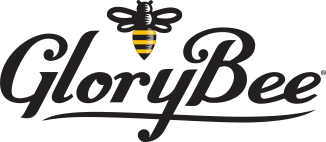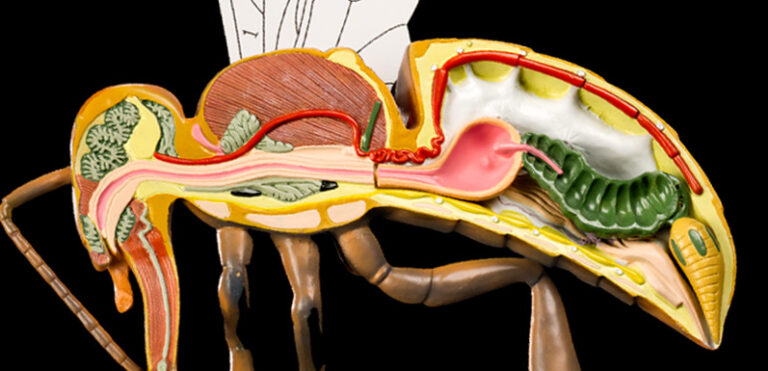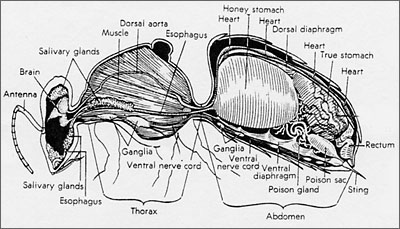Below is a description of the unique parts of a bee.
- Pollen Basket: The pollen is scraped out of the pollen comb by means of the pectin, on opposite hind legs. From the pectin it is placed or scraped into the pollen basket. (Pollen basket is a cavity surrounded by hairs.)
- Feelers: The organs of smell and touch.
 Tongue (Proboscis): This organ of taste has two parts, one long tube-like tongue to suck smaller particles at the bottom of a flower and another tube inside this long tube with mop-like attachments at its end to help gather the most minuscule particles of nectar and draw them into the food sac.
Tongue (Proboscis): This organ of taste has two parts, one long tube-like tongue to suck smaller particles at the bottom of a flower and another tube inside this long tube with mop-like attachments at its end to help gather the most minuscule particles of nectar and draw them into the food sac.
- Eye: Can distinguish the hue of various flowers.
- Abdomen: Contains the wax glands and the stinger. The wax glands are where wax scales are secreted by eight wax plates under the abdomen of worker bees. It is liquid when first secreted and then dries into small flakes. The bees can only produce wax for a certain amount of time until the wax plates turn into a flat layer of cells. The stinger consist of three slender closely connected pieces forming the sharp piercing organ that projects from the tip of the abdomen.
- Stomach: Bees have two stomachs. The honey stomach holds nectar or honey. The stomach mouth is where nectar goes first and the pollen is strained out before it goes into the honey stomach.
- Wings: The two wings of the bee on each side are united to each other by a series of very small hooks so that they work together, and thus four wings are converted into two.
- Salivary Glands: Located in the back part of the head and front of the thorax. The saliva glands affect the liquid food before it enters the mouth or it can be allowed to run down the tongue upon hard sugar in order to dissolve it.


 Tongue (Proboscis): This organ of taste has two parts, one long tube-like tongue to suck smaller particles at the bottom of a flower and another tube inside this long tube with mop-like attachments at its end to help gather the most minuscule particles of nectar and draw them into the food sac.
Tongue (Proboscis): This organ of taste has two parts, one long tube-like tongue to suck smaller particles at the bottom of a flower and another tube inside this long tube with mop-like attachments at its end to help gather the most minuscule particles of nectar and draw them into the food sac.